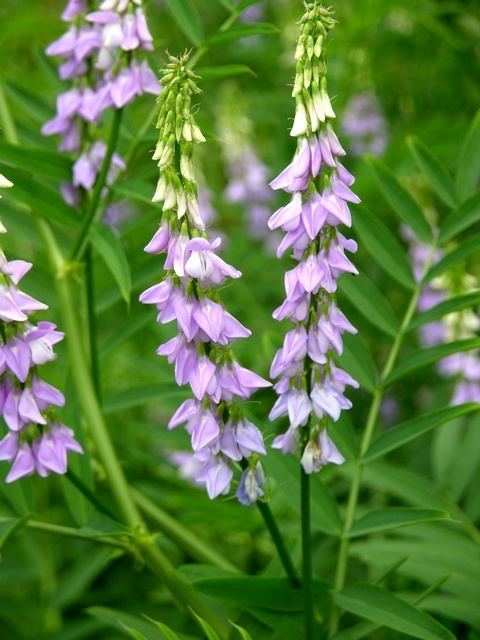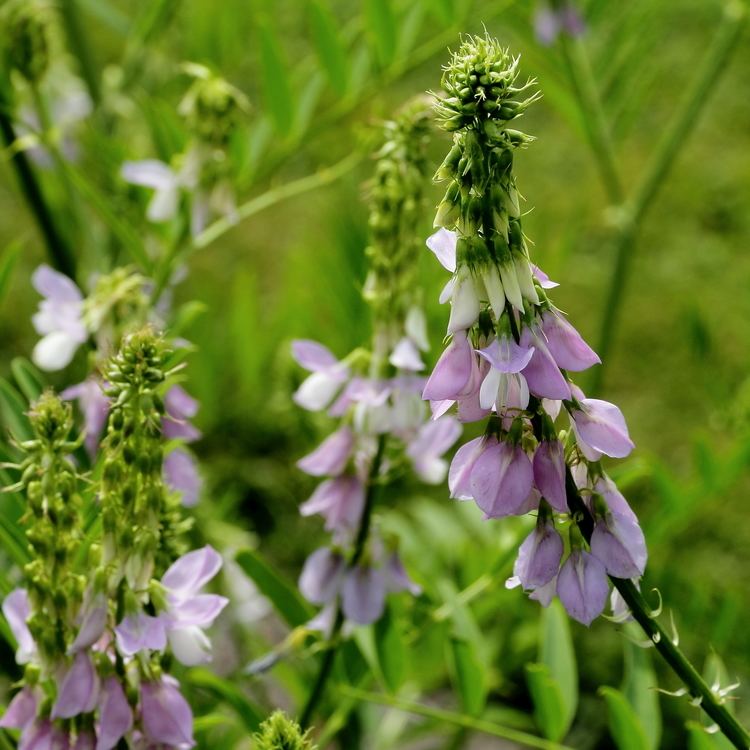Higher classification Galega | Subfamily Papilionoideae Scientific name Galega officinalis Rank Species | |
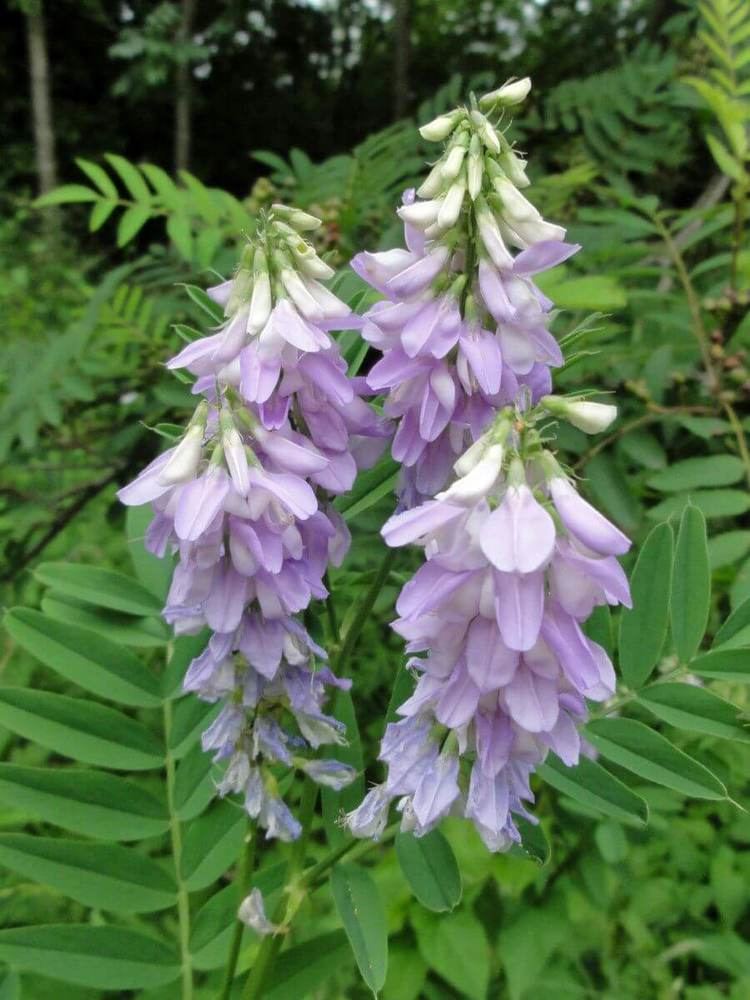 | ||
Similar Galega, Galega orientalis, Melilotus officinalis, Cnicus, Elecampane | ||
Galega officinalis
Galega officinalis, commonly known as galega, goat's-rue, French lilac, Italian fitch, or professor-weed, is an herbaceous plant in the Faboideae subfamily. It is native to the Middle East, but it has been naturalized in Europe, western Asia, and western Pakistan. The plant has been extensively cultivated as a forage crop, an ornamental, a bee plant and as green manure. However, the plant has proved too toxic for widespread agricultural use, with the potential to induce tracheal frothing, pulmonary oedema, hydrothorax, hypotension, paralysis and death. Hence the name "Goat's rue".
Contents
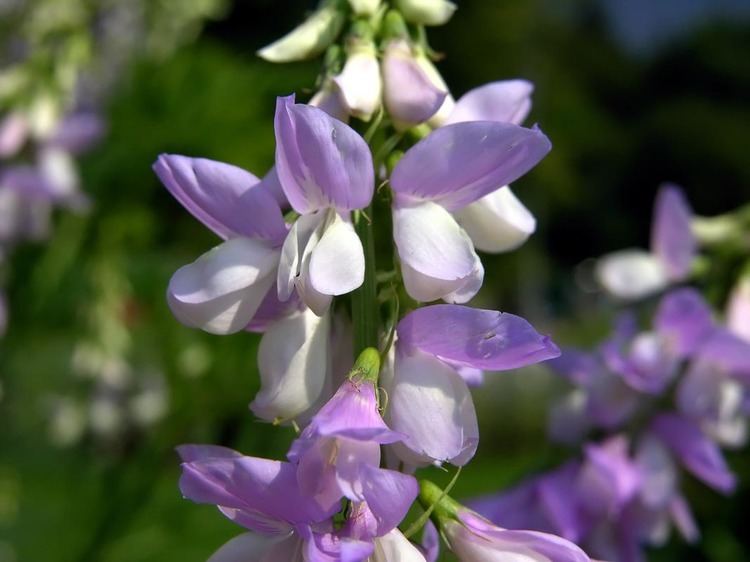
Its name derives from gala (milk) and ago (to bring on), as Galega has been allegedly used as a galactogogue in small domestic animals. Galega bicolor is a synonym. It is a hardy perennial that blooms in the summer months.

G. officinalis is used as a food plant by the larva of Coleophora vicinella, a species of moth.
Galega officinalis top 5 facts
Distribution
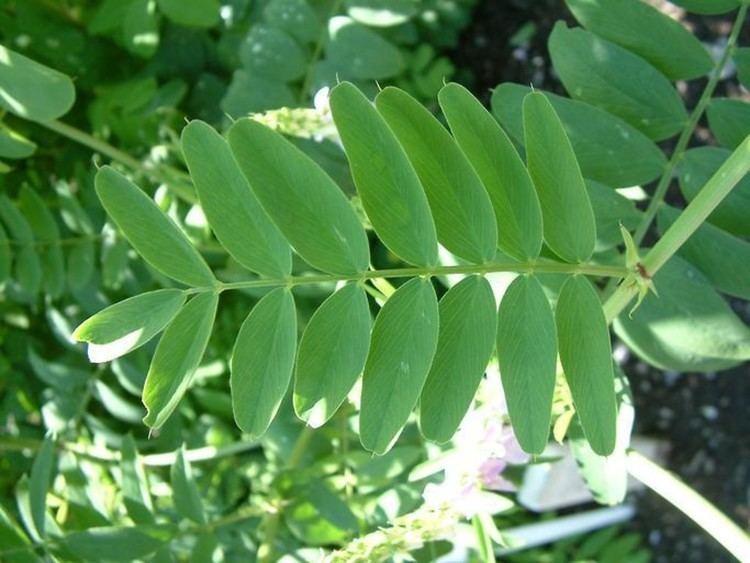
In 1891, G. officinalis was introduced to Cache County, Utah, for use as a forage crop. It escaped cultivation and is now a weed and agricultural pest, though it is still confined to that county. As a result, it has been placed on the Federal Noxious Weed List in the United States. It was collected in Colorado, Connecticut and New York prior to the 1930s, and in Maine and Pennsylvania in the 1960s, but no more collections have been made in these areas since and the populations are presumed to have died out. It has also been found in Argentina, Chile, Ecuador, and New Zealand.
Uses

G. officinalis has been known since the Middle Ages for relieving the symptoms of diabetes mellitus. Upon analysis, it turned out to contain compounds related to guanidine, a substance that decreases blood sugar by mechanisms including a decrease in insulin resistance, but were too toxic for human use. The active ingredient in the French lilac is galegine or isoamylene guanidine. Georges Tanret identified an alkaloid from this plant, galegine, that was less toxic (than guanidine), and this was evaluated in unsuccessful clinical trials in patients with diabetes in the 1920s and 1930s.
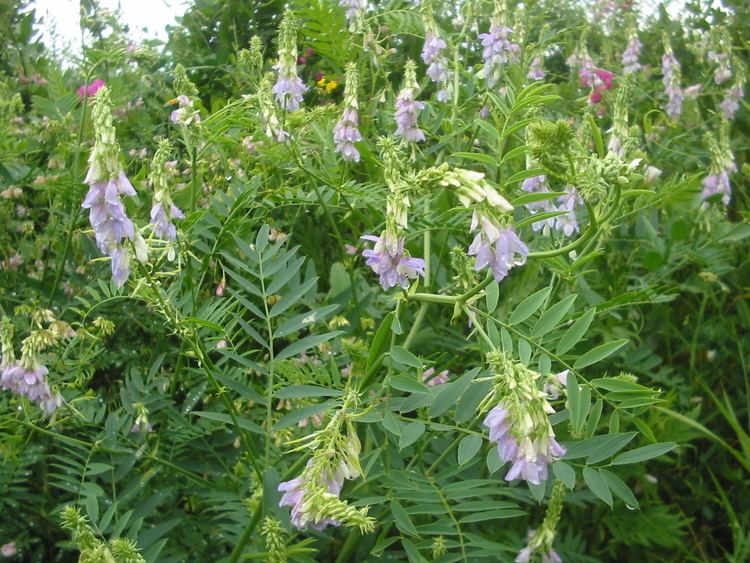
Other related compounds were being investigated clinically at this time, including biguanide derivatives. This work led ultimately to the discovery of metformin (Glucophage), currently used for the management of diabetes and the older agent phenformin. The study of galegine and related molecules in the first half of the 20th century is regarded as an important milestone in the development of oral antidiabetic pharmacotherapy.
